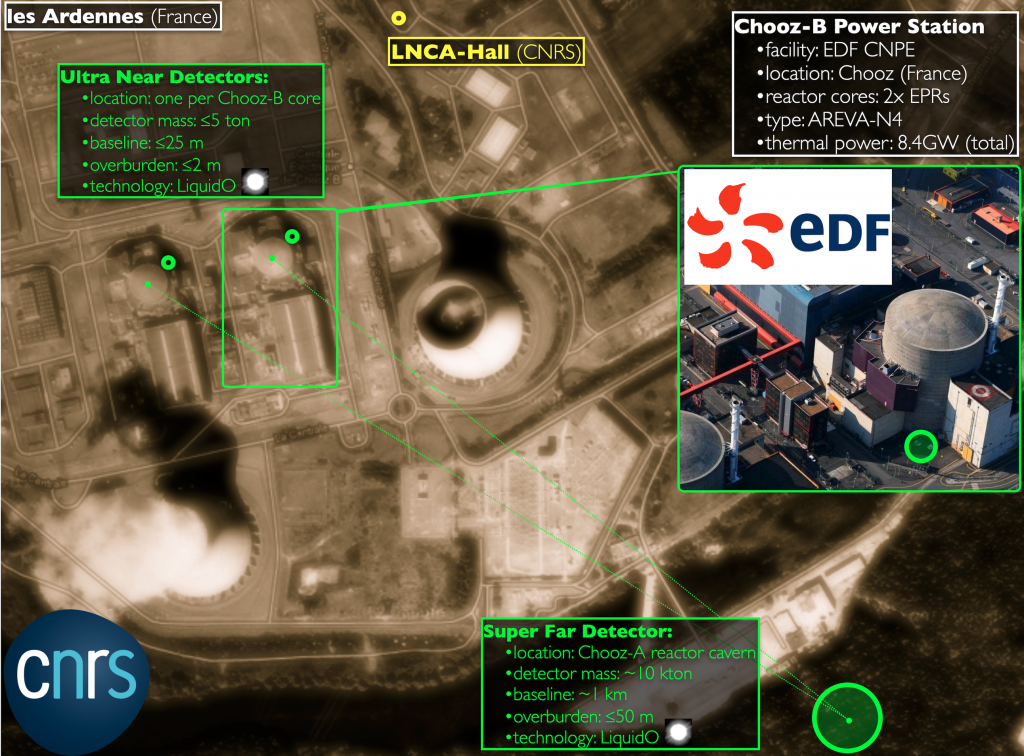The SuperChooz project relies strongly on the unique opportunity of reusing the existing EDF Chooz-A nuclear reactor site for science after dismantling. There are 2 existing underground caverns amounting to up to ~50,000m3 in volume with an overburden of about 100m.
In 2018, CNRS and EDF started a dialogue enabling the Chooz-A caverns to be exploited by CNRS for fundamental scientific research. The EDF-CNRS agreement (signed on the 7th of Sept. 2022) officially launches the SuperChooz Pathfinder project, led by both EDF-CNRS, to consider granting access to the caverns for the eventual construction of the SuperChooz large detector, order 10ktons, as required by the physics studies, should the project be demonstrated to be feasible.

The largest site of the experiment is referred to as the super far detector (SFD) since it is located with a baseline of ~1km average distance to the two Chooz-B nuclear reactor cores. Due to the extremely high precision needed for the reactor neutrino physics flux systematics control, two (2) new sites are needed to be referred to as the ultra near detectors (UND). These are required to be close, ≤25 m baseline, to each Chooz-B reactor core. In this way, each UND is expected to be ≤ 5 tons, enabling an effective total cancellation of the otherwise dominant reactor flux systematic uncertainty at the SFD, upon data analysis. Hence, SuperChooz implies three new experimental sites at Chooz beyond the existing sites within the perimeter of today’s LNCA laboratory.

The former near-detector site, built for Double Chooz, part of today’s LNCA laboratory, located at about ~400m baseline of the reactor cores, is expected to be used extensively during the SuperChooz Pathfinder era to test and demonstrate experimentally in-situ the new LiquidO-based detection technology needed for SuperChooz and even beyond.
